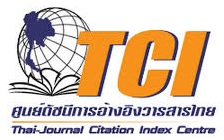Multimodal Discourse Analysis of Image - Text Relations in International Hotel Homepages
DOI:
https://doi.org/10.55766/MSIU5466Keywords:
hotel homepages, promotional discourse, multimodal discourse analysis, image-text relations analysis, English for Specific Purposes (ESP)Abstract
Tourism industry is a major source of income for many countries, including Thailand. Advertising plays a vital role in tourism and hospitality industry. It also has a significant impact on consumer decision making. Online advertising on a website is a vital tool and is widely used in tourism businesses as it helps them to advertise and market their products and services globally. Importantly, homepage is the most important part of the website in the future. So, it needs to be able to provide effective information and encourage potential customers to engage and revisit the website. Images are extremely important and widely used in tourism advertisement as they entice the viewers’ attention and help them construct an image of certain destinations, products and services in their mind. Therefore, effective use of visual element to accompany the textual content is important. This research aims to analyze status and logico-semantic relations between textual and visual elements located in the content area of international hotel homepages, and also to find out if there is any visual element that can be used to substitute the texts in these homepages. Twenty four hotel homepages from eight different countries were selected for the analysis. The system of status and
logico-semantic relations by Martinec & Salway (2005) was used as the analysis framework. The results of the present study show that there are 3 different status relations and 3 different logics-semantic relations found in this corpus. It is also found that there are certain visual images that can be used as text substitution.
References
Bateman, J. A. (2014). Text and Image: A Critical Introduction to the Visual/Verbal Divide. London: Routledge.
Carney, R. N., & Levin, J. R. (2002). Pictorial Illustrations Still Improve Students’ Learning from Text. Educational Psychology Review. 14(1): 5-26.
Clear Web Service. (2011). Clear Web Services Ten Natural Steps To Making Sure Your Website Is Optimized For A Search Engine. Coleford: Clear Web Services.
Eitel, A., Scheiter, K., & Schüler, A. (2013). How Inspecting a Picture Affects Processing of Text in Multimedia Learning. Applied Cognitive Psychology. 27(4): 451-461.
Koteyko, N., & Nerlich, B. (2007). Multimodal Discourse Analysis of Probiotic Web Advertising. The International Journal of Language, Society and Culture. 23: 20-31.
Kress, G. R., & Van Leeuwen, T. (1996). Reading Images: The Grammar of Visual Design. London: Routledge.
Kyrnin, J. (2007). About. com Guide to Web Design: Build and Maintain a Dynamic, User-Friendly Web Site Using HTML, CSS and Javascript. Massachusetts: Adams Media.
Landa, R. (2013). Essential Graphic Design Solutions. Singapore: Thomson Learning.
Martinec, R., & Salway, A. (2005). A System for Image–Text Relations in New (and Old) Media. Visual Communication. 4(3): 337-371.
McGovern, G., & Norton, R. (2001). Content Critical: Gaining Competitive Advantage Through High-Quality Web Content. London: Financial Times Prentice Hall.
Minnick, J. (2016). Web Design with HTML & CSS3: Complete. Boston: Cengage Learning.
Morgan, N., & Pritchard, A. (2000). Advertising in Tourism and Leisure. London: Routledge.
Myers, D. R. (2012). The Graphic Designer’s Guide to Portfolio Design (3rd Eds.). New Jersey: John Wiley & Sons.
O’Halloran, K. L. (2011). Multimodal Discourse Analysis. In Hyland, K., & Paltridge, B. (Eds.), Companion to Discourse (pp. 120-137). London: Continuum.
Parker, S. (2012). The Web Designer’s 101 Most Important Decisions: Professional Secrets for a Winning Website. Ohio: How Books.
Sabaruddin, S. A., Abdullah, N. H., Jamal, S. A., & Tarmudi, J. (2015). Exploring the Accessibility and Content Quality of the Go2homestay Website. In Radzi, S. M., Sumarjan, N., Chik, C. T., Zahari,
M. S., Mohi, Z., Bakhtiar, M. F., & Annuar, F. I. (Eds.), Theory and Practice in Hospitality and Tourism Research (pp.327-331), Penang: CRC Press.
Salway, A., & Martinec, R. (2002). Some Ideas for Modelling Image-Text Combinations [On-line]. Available: http://epubs.surrey.ac.uk/508/
The World Tourism Organization. (2015). UNWTO Tourism Highlights 2015 Edition. Madrid: UNWTO.
Van den Bosch, A. L. M. (2005). Corporate Visual Identity Management: Current Practices, Impact, and Assessment. Alblasserdam: Offsetdrukkerij Haveka B.V.
West, M. (2013). HTML5 Foundations. West Sussex: John Wiley & Sons.
Downloads
Published
Issue
Section
License
Copyright (c) 2018 Suranaree Journal of Social Science

This work is licensed under a Creative Commons Attribution-NonCommercial-NoDerivatives 4.0 International License.









 ThaiJO
ThaiJO